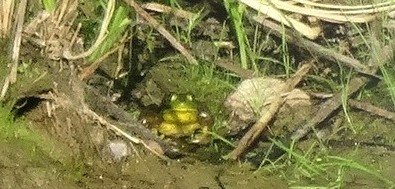Blue Vervain is blooming profusely in the wetland surrounding the pond. Verbena hastata is also called Swamp Verbena, Blue Verbena, Simpler's Joy; it is a perennial herbaceous plant that blooms every summer. The stiff erect square stems remain standing all winter, providing seeds to the birds in cold snowy months. In the growing season the plant has opposite, simple leaves which have double-serrate margins.
The family name for genus Verbena is Latin for "sacred plant" because it has been used for hundreds of years in various health remedies. The Latin specific epithet hastata means "spear-shaped" and describes the leaves of this plant.
The family Verbenaceae includes herbs, shrubs, and trees; among them, teak trees -- highly prized for its furniture wood.































